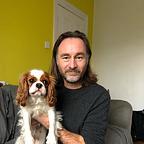Designing for the chicken, not the egg
Much has been said about the evolution of design thinking, by people far smarter than me (I’ll list a load of great sources below).
But a really strong metaphor for how we should be designing products, services and experiences can be found in eggs.
For years in recipes and shopping lists, ‘large eggs’ have been the go-to. Bakers don’t want an imperfect cake. Shoppers don’t want a tiny egg. So as in everything else, from cars to cappuccinos, we’ve been encouraged to go large.
And all without ever thinking of the chicken that has to lay the large egg, and the regular discomfort, pain and sometimes fatal injury this means.
It doesn’t take much of a leap. We really don’t have to think too much further up the supply chain. And we all know where eggs come from.
Hence this post urging recipe writers to specify medium eggs, and for all of us to buy medium or even better, mixed eggs (if we must eat eggs at all).
How did we get here?
For decades, user or customer-led design has simply been about removing friction. From the farm, to the local shop, to the supermarket, to the online delivery van. Making it as easy as possible to get whatever we want.
A way of thinking that’s culminated, inevitably, in the global dominance of Amazon, a behemoth that allows us all to be the rulers of our own kingdoms of landfill.
A world where with one click, we can have that bit of junk we just saw online brought to us from the other side of the world, with no effort, and no thought to the consequences — the raw materials, emissions, the waste, the human cost on the factory worker, warehouse picker or delivery driver.
These experiences affect our perceptions, our habits and ultimately our brains. And the danger is that the cumulative effect of all this ‘convenience’ is turning us into spoiled little dictators who are constantly reassured that, yes, we can have whatever we want, whenever we want, with no friction, no questions asked and no real people to talk to.
Where should we be going instead?
‘Human-centred’ design starts with empathy, promising us a more mindful experience, that will consider our emotional, social and wellbeing needs along with just reducing friction. Helping us make better choices and bringing us, perhaps, moments of joy and connection. But still placing us at the centre of our own universe.
Community-centred design promises that we’ll start to consider the people in the supply chain, the makers, the workers, the deliverers, maybe the people whose jobs can be made better or safer or more secure by what we do.
But right now, our biggest challenge isn’t designing online shopping experiences. It’s working out how to live on a planet that’s turning against us.
And if we’re going to get to the answers, it’s nature-, or life-centred design we need. Design that places us where we really are, as one interdependent species among many, part of the web of life. That’s a very different kind of design.
I don’t know how to get there (see below) but I do know one place to start.
Don’t design for eggs, design for chickens.
The really good links I promised you:
From human-centred, to life-centred design by Johnathyn Owens
Brand purpose and life-centred design by the good people at VentureThree
Designing for people as though society existed by Alexis Lloyd
Design as though we’re not at the centre of the universe (this one is loads of fun) by Ted Hunt
Looking beyond the user-centred lens by a whole bunch of smart people
And, too late, I have to credit the excellent Lauren Pope’s excellent newsletter Ten Things, which led me down the human->nature centred design rabbit hole in the first place and is a reliable and consistent source of quality, thought provoking things.
